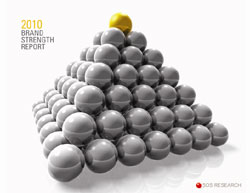 More than two years after the Great Recession officially commenced it is clear that U.S. consumers have made fundamental changes in the way they shop, where they shop and the brands they buy.
More than two years after the Great Recession officially commenced it is clear that U.S. consumers have made fundamental changes in the way they shop, where they shop and the brands they buy.
Private label products in commodity categories have gained share as consumers look to lighten the load on the family budget. The discount/mass and mid-tier retail segments have also grown share as consumers look to find value for their dollar. And brands that have established a solid connection with the consumer are not only surviving in the new economy, but are gaining share of consumers mindshare and their wallets as the consumer looks to brands they trust for quality and a fair price.
It has never been more important than it is now for brands in the sports and outdoor lifestyle market to establish and capitalize on their relationship with the consumer. Not only does this serve brands well now, it will only pay bigger dividends down the road as the economy improves.
The Brand Strength Index was originally formulated in early 2009 by The SportsOneSource Group in an effort to more effectively measure the overall consumer perception of a specific brand. Each brand measured was tested across four main criteria, with those criteria each individually weighted to reflect their importance in the overall indexing formula.
All four criteria were then combined using a proprietary formula to generate a single Brand Strength Index for each qualifying brand.
Nike was able to separate itself from the rest of the brands measured thanks to overwhelming awareness, both aided and unaided, due in large part to the massive spending on marketing, or what Nike, Inc. refers to as demand creation.
Nikes BSI score remained consistent with the results of the 2009 Brand Strength Index, improving 2.1 BSI points versus the 2009 BSI score for the brand. This is an indication that even in a struggling economy Nike has been able to maintain its dominance in consumers minds and still maintains a larger share of their wallets.
Adidas followed Nike with a BSI score of 627.6, more than 100 points lower than the global brand behemoth, but Adidas did narrow the gap versus scores published in the 2009 Brand Strength Report.
The Brand Strength Index numbers change a bit when assessing the results for younger consumers aged 13 to 24years old, both for a brands individual score and the ranking of the brands. The top two brands, Nike and Adidas, remain the same, but see their scores increase modestly with the young consumer. Under Armour moves into the third sport with a young consumer BSI score 14.2 points higher than their overall BSI score and The North Face takes the #5 spot with a young consumer BSI score 27.7 points higher than the overall BSI score.
Look for all the background on an individual brands strength index score in the SportsOneSource 2010 Brand Strength Report.
The Brand Strength Index is just one component of the SportsOneSource 2010 Brand Strength Report. The Brand Strength Report is available now and is available in various formats, including report segments based on age, race, gender and household income. Specific Brand Strength Index reports have been developed for 72 brands.
The SportsOneSource Brand Strength survey was conducted in late November utilizing a third-party Internet panel provider. A total of 4,003 responses were collected providing information on over 70 brands. Respondents were age 13 and up. SportsOneSource made every effort to control the demographics to best represent the U.S. population, but Internet surveys generally tend to skew to older, more Caucasian, better educated and higher income households.
The results of the survey can be projected to the U.S. population with a margin of error of +/- 1.5 percentage points.
To find out more about the report or to reserve your copy, contact The SportsOneSource Group at 704.987.3450 or e-mail to: research@SportsOneSource.com















